Two Buddhist temples will be built in Moscow to commemorate Buddhist soldiers who died during WWII. Buddhism has a long history in Russia, and its influence has stretched from Kalmykia in the south to the shores of Lake Baikal.
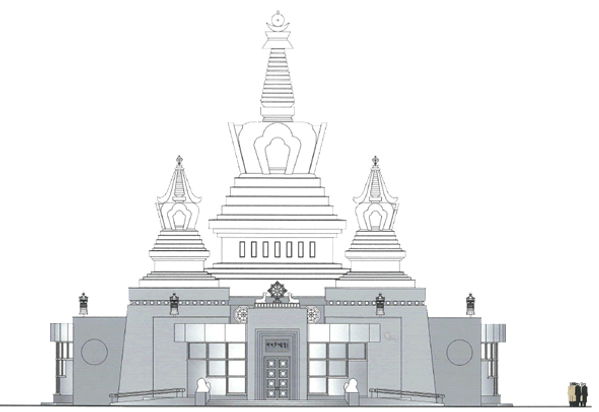
The construction of two new Buddhist temples will start in Moscow this fall. One of them will be located on Poklonnaya Hill; the other - in Moscow’s Otradnoe District. However, Buddhism has a long history in Russia, and its influence has stretched from Kalmykia in the south to the shores of Lake Baikal.
Above: The project of one of the Buddhist temples in Moscow.
Above: The project of one of the Buddhist temples in Moscow.

Datsans were officially acknowledged by Imperial Russia in 1734. The Buddhist temple in St. Petersburg was built in 1915. Money for its construction was donated by the 13th Dalai Lama and the Buryat Lama Agvan Dorzhiev. Additional funding was provided by Buddhists living in Buryatia and Kalmykia.

The Acagatski Datsan was built illegally in Buryatia in 1825. By 1841, it was granted official status, housed 41 lamas and 4700 followers. In 1891, the temple was visited by Emperor Nicolas II. It became a health center for Buddhists from all across the country. In 1936, the temple was destroyed by the Ulan-Ude city council. It was restored almost a century later, the building site was blessed by Dalai Lama.
Above: The Acagatski Datsan after its reconstruction in 1992.
Above: The Acagatski Datsan after its reconstruction in 1992.
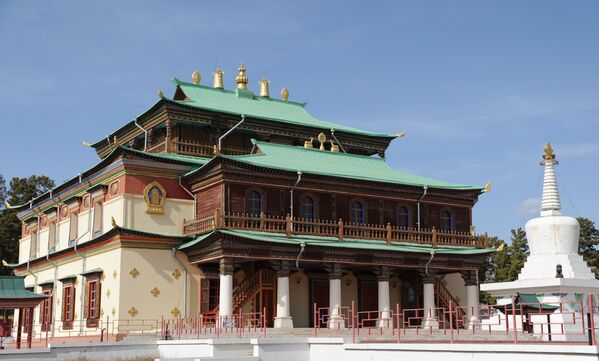
The Ivolginsky Datsan was built in 1945 as the only official Buddhist spiritual centre in the USSR. The 12th Pandito Hambo Lama of the Ivolginsky Datsan died mid-meditation in 1927 and was buried by his students and followers. When he was exhumed 30 years later, his body showed no signs of decay, he had soft joints and skin. Some buddhists believe that the Lama is still alive, only immersed in deep meditation.
Above: The Ivolginsky Datsan in the republic of Buryatia near Verkhnyaya Ivolga village.
Above: The Ivolginsky Datsan in the republic of Buryatia near Verkhnyaya Ivolga village.
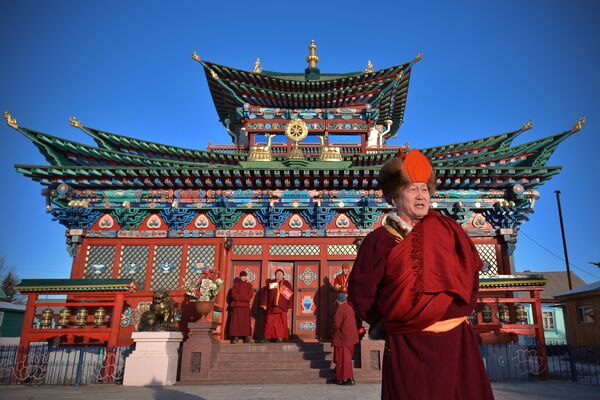
Buryatia’s Ivolginsky Datsan is the most important Buddhist monastery in Russia. It is home to unique samples of old Buryat art, as well as Buddhist paintings, sculptures, and ritual objects. Among the treasures that have been gathered and preserved by the monastery, there is a collection of old Buddhist manuscripts written in Tibetan on natural silk.
Above: Buddhist Monks at the Ivolginsky Datsan in the republic of Buryatia near Verkhnyaya Ivolga village.
Above: Buddhist Monks at the Ivolginsky Datsan in the republic of Buryatia near Verkhnyaya Ivolga village.
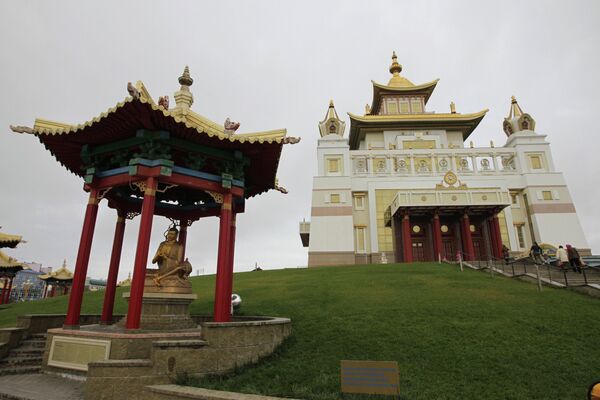
Burkhan Bakshin Altan Sume (The Golden Abode of Buddha Shakyamuni) is the largest Buddhist temple in Europe and Russia. It was built in 2005 in Elista, the capital of the republic of Kalmykia. The building site was blessed by the Dalai Lama. The population of Kalmykia is predominantly Asian, and Tibetan Buddhism is the most popular religion.
Above: Burkhan Bakshin Altan Sume, the largest Buddhist temple in Europe.
Above: Burkhan Bakshin Altan Sume, the largest Buddhist temple in Europe.
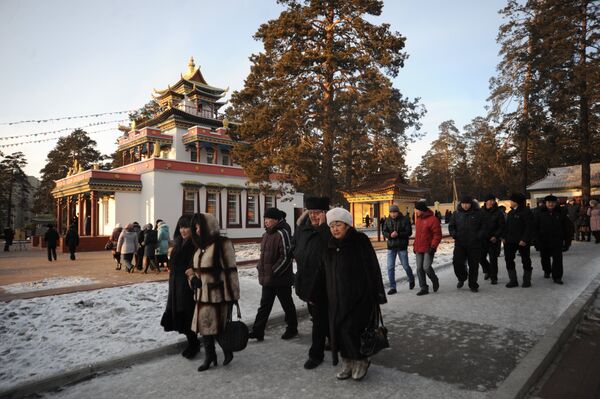
Damba Braibunling temple in Chita was built in 2010. Its name can be translated from Tibetan as "a place where the rice of Buddha's teachings is gathered." In 2013, the temple's buddhist monks greeted the Sochi Olympic flame.
Above: Buddhists are celebrating the "Dugzhuuba" (ritual purification) ceremony before the Buddhist New Year in Chita.
Above: Buddhists are celebrating the "Dugzhuuba" (ritual purification) ceremony before the Buddhist New Year in Chita.

The Sartul-Gegetuysky Datsan was founded in 1769 by tribes of Buryatians. It housed over 300 lamas that taught philosophy and medicine. Today the temple is located 235 km from Ulan-Ude, the capital of the republic of Buryatia. Many people still come here to get advice from Buddhist astrologers and healers.
Above: The Sartul-Gegetuysky Datsan in Buryatia.
Above: The Sartul-Gegetuysky Datsan in Buryatia.

The Syakyusn-Syume Temple and Monastery was built in 1996 near the city of Elista. Since the 1990s, Buddhism has enjoyed a revival in Russia and the head of the Republic of Kalymika, Kirsan Ilyumzhinov, has personally financed the construction of the temple.
Above: The facade of the Syakyusn-Syume Temple and Monastery near Elista.
Above: The facade of the Syakyusn-Syume Temple and Monastery near Elista.

The Lord Zonkavy Tantric Monastery was built in 2008 in Gorodovikovsk, Kalmykia. Unlike other monasteries, where Buddhists study philosophy, tantric monasteries are used predominantly for various ritual ceremonies. According to local monks, the rituals can not bring back the dead, but can help in many areas of life, and even protect the whole planet.
Above: The Lord Zonkavy Tantric Monastery in Gorodovikovsk, Kalmykia.
Above: The Lord Zonkavy Tantric Monastery in Gorodovikovsk, Kalmykia.
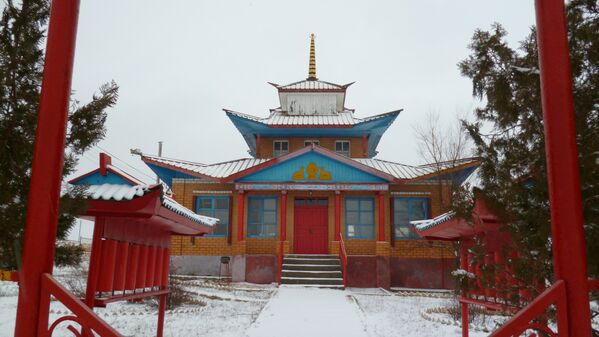
The Cheerya-Khurul Temple was built in 1903 in Kalmykia. It was very large, over 2000 Buddhists could pray there simultaneously. However, it was destroyed in 1960. In the 1990s, a new temple was built on the site of the one that had been destroyed.
Above: The Cheerya-Khurul Temple in Kalmykiya.
Above: The Cheerya-Khurul Temple in Kalmykiya.



